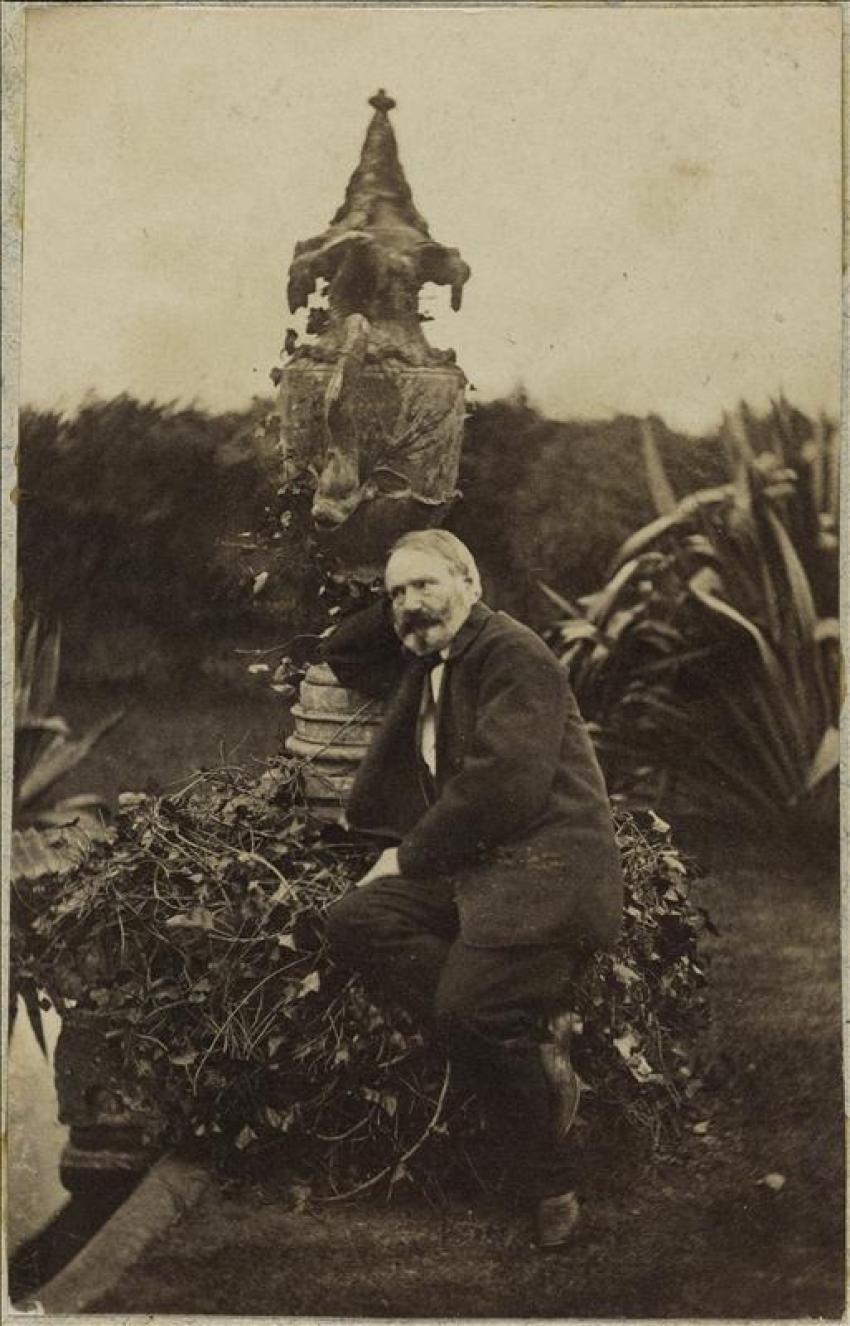Visit Hauteville House in the days of Victor Hugo
Charles Hugo published his book, “Chez Victor Hugo par un passant” [At Victor Hugo’s House, by a Passer-by] in 1864. In it, he recalled Hauteville House the way it was when his father had just refurbished it. He takes you on a tour of the house, in the company of the photographer Edmond Bacot:
“The character of this house is that, whether by his thought, his taste, or his work, Victor Hugo has left his mark in its every detail. Not a single thing has been done that he did not preside over! He directed everything, wanted everything, oversaw everything. It’s a two-storey autograph. If it is ever demolished, you will see sketches of all the building-work and furnishings on the walls”.
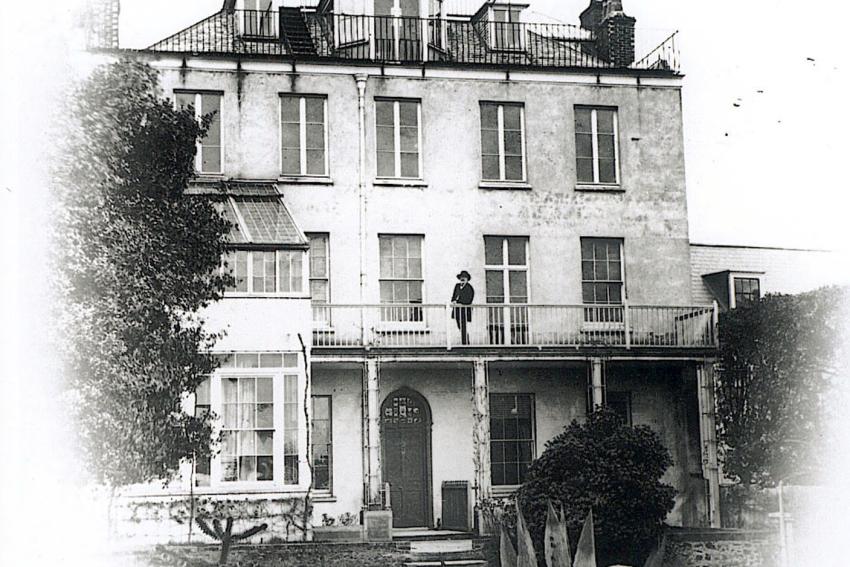

« Finally, if you go down to the sea, a large house will catch your eye and you will read on it the now famous name: Hauteville-House. And then, looking back on your own impressions, you will see that these three emotive monoliths - freedom, exile, and the poet - all come together as one idea, just as they have been brought together in one place ».
Vestibule
“As one enters Victor Hugo's house, the layout of the vestibule catches the eye. – One finds oneself standing in front of a sort of edifice. The upper lintel shows a high, gilded and painted bas-relief depicting the main themes from The Hunchback of Notre Dame – This Hauteville-House frontispiece is of a profound and charming effect; it seems that the romantic family created by the poet welcomes you to his home and that one can, indeed, enter Victor Hugo's home only through the portal of his first work. […]”
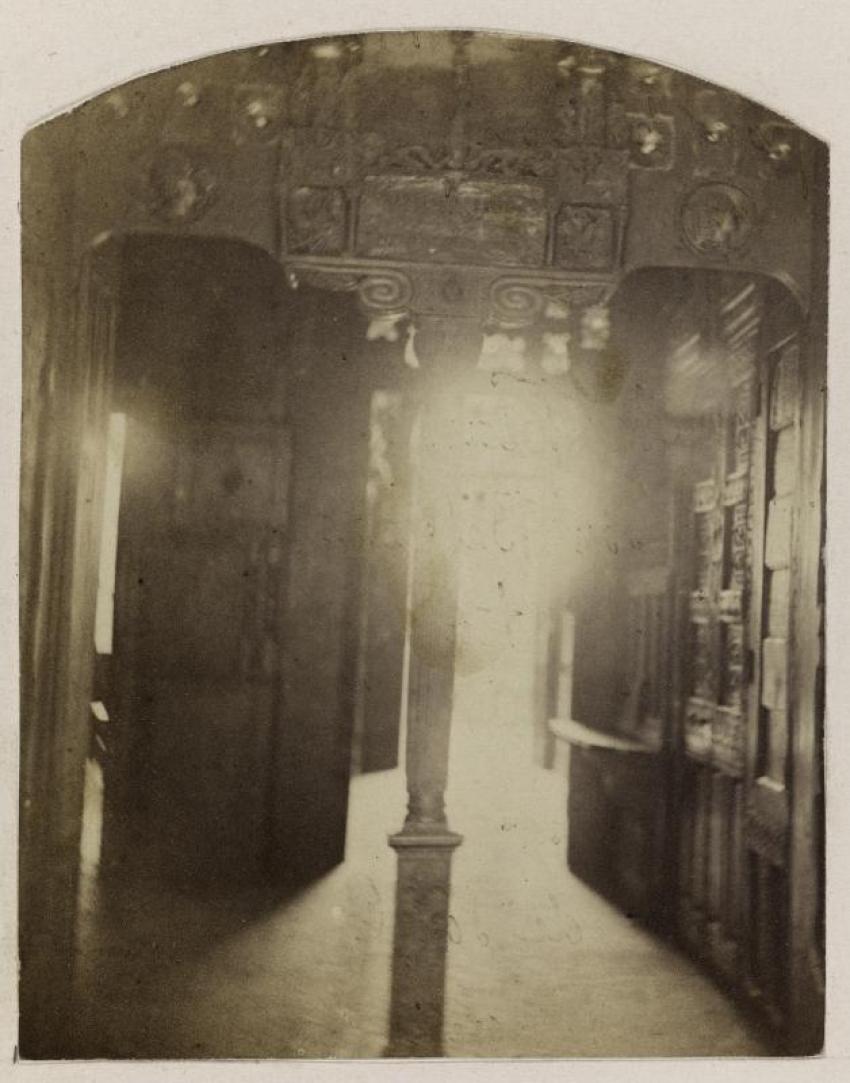
Billiard Room
“Since this door welcomes us so well, let us pass through it and enter the billiard room, which is not, as we shall see, one of the least interesting rooms in the house. – The room is decorated with large family pictures, a few maps, and drawings by the poet, framed in varnished fir borders. One is immediately attracted by the strange physiognomy of these pen-and-ink drawings. […]”

Tapestry Room
“From the billiard room one enters the tapestry room, as it is called at Hauteville House. Here, as in the other rooms, the fireplace has been the principal composition. (Must not the fireplace be the family's greatest attraction?) – Let us imagine a cathedral of carved wood which, rooted powerfully in the floor, raises a single spire to the ceiling, splaying the tapestry with its last indentations. The doorway would be represented here by the fireplace; the rose window by a convex mirror placed above the mantelpiece; the central gable by a robust entablature decorated with fantastic foliage and arches of a deliciously bastard taste, where the Byzantine mingles with the Rococo; the two towers, finally, by two buttresses which happily repeat all the ornaments of the whole. The crown, with its imposing effect, is reminiscent of the facades of the houses in Antwerp and Bruges. Here too, as in the roofs of these old Philip II farmhouses, a figure engages in the simplicity of the wood and brings to life its vigorous, crushed line.
This figure is that of a bishop whose crosier alone is gilded; it bears, in two escutcheons placed to his right and left, this motto borrowed from one of our most witty proverbs:
Wooden staff, golden bishop
Golden staff, wooden bishop. […]”
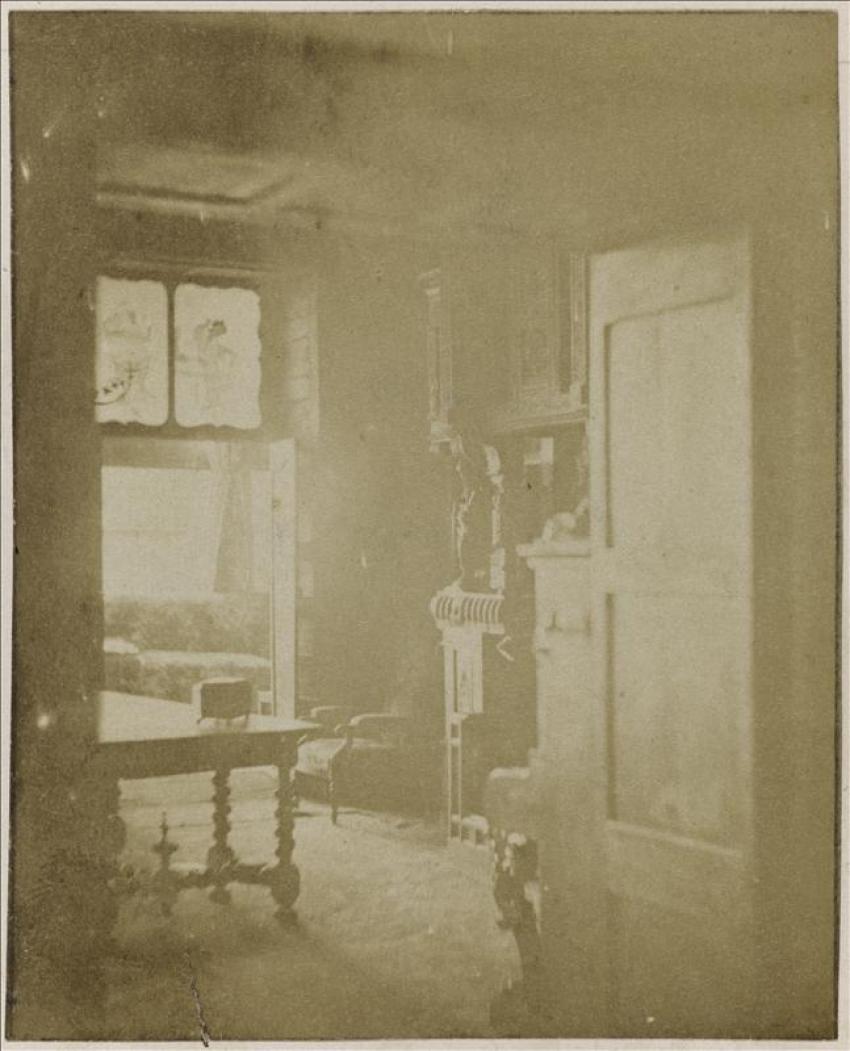
“Workshop”
“As we passed through a room called the “workshop”, we noticed another piece of furniture that was truly monumental and which, like the one in the tapestry room, rose from the floor to the ceiling. – For those who like to reduce everything to a general idea, it is obvious that Victor Hugo has a taste for the excessive. […]”
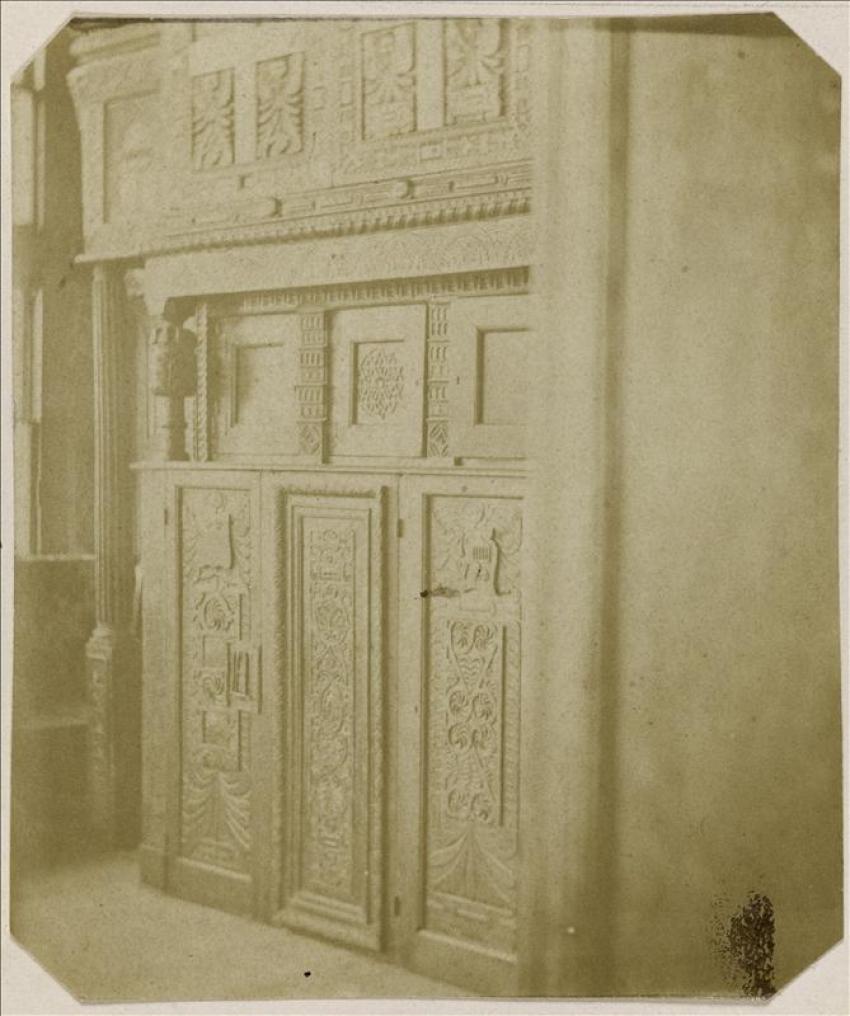
Dining Room
“The most important meal in terms of conversation and duration is lunch. – At 11 o'clock everyone arrives at once; rarely is there a latecomer. Victor Hugo is one of the first, and nothing is simpler or more patriarchal than his manner. To see him arrive dressed all in grey, wearing a grey felt hat, with both hands gloved in wool, one would think he was a farmer coming to sit at the farmhouse table, were it not for the grace of his greeting and the delicate attentions of his speech.
Once at the table, the duties of the master of the house could not be more conscientiously discharged. It is he who makes the portions and distributes them to each guest, observing with the utmost rigour the order of the strictest etiquette; the foreigner happens to be the first. […]
The walls are no longer covered with tapestries or carved wood, but with magnificent 17th century Dutch faience. One can imagine an immense mosaic representing large bunches of meticulously painted flowers thrown into capricious vases, then bizarre animals in which the spirit of the grotesque imaginations of Chinese Holland bursts forth. This mosaic with a white and blue background rests on an oak base which forms three massive stalls decorated with venerable paintings on panels; this gives the dining room the appearance of one of those old convent refectories where the good monks of Rabelais fasted with a lot of poulards, and celebrated, with laughter, the divinity of the bottle. A bevelled mirror, surmounted by a small sleeping child chiselled in copper, further enlivens this enamel armour, flooded with light from two large windows open onto the garden.
And now, add a fireplace made of purple and blue tiles, one of those fireplaces such as our ancestors had, made to give confidence to the most robust appetites, - on the ceiling a Gobelins tapestry representing, with its jewel case of colours, the riches of the summer, - and you will understand that one lingers willingly at the poet's table. […]
It is not for us to describe in full an oak armchair, always empty, which sits against the wall at the top end of the table. Victor Hugo sees it as the place of the forefathers at the family meal. A chain has closed this armchair which bears, among other inscriptions, this one: The absent are here.”
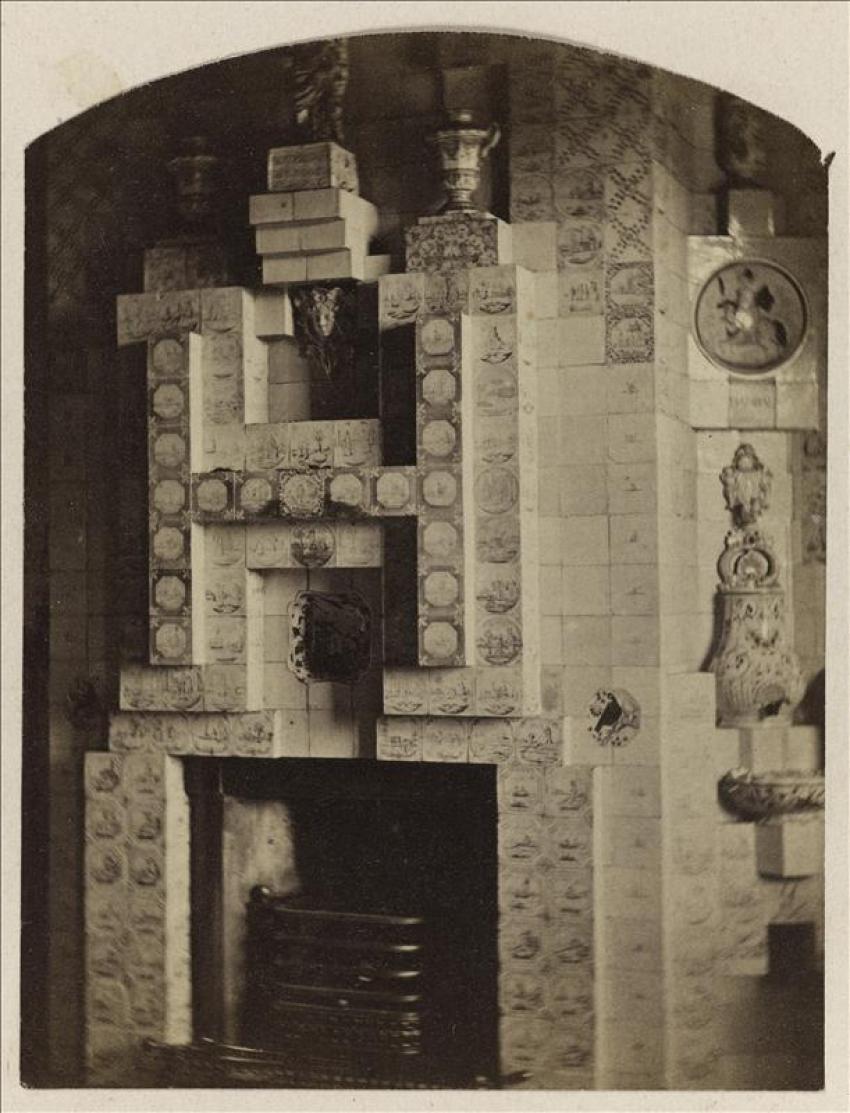
Red Drawing Room
“An Indian damask red hanging covers the walls of the Red Room and serves as a frame for large Norwegian jet tapestries, which belonged to Queen Christine's bedroom at Fontainebleau. […]
One wonders how the furnishings will be able to respond to such a hanging; - but here again the fireplace has carried all the effort of the decorator. – Imagine the stern of the Bucentaurus, when the doge marries the sea. Four statues, gilded with Venetian gold and bearing these verses of Lucretius:
Juvenum simulacra per aedes
Lampadas igniferas manibus retinentia dextris,
support the canopy below which is the fireplace. They are Negroes with cambered profiles, shaven heads, slender and athletic forms, barely covered by a light drapery that opens over the chest, clasps over the shoulder and leaves the legs bare. Each of them keeps a different pace, and yet they are all part of the same group. They half-step forward and seem to be obeying an order: they look like a quadriga of golden slaves. Behind them, a mirror rising to the ceiling reflects them splendidly.
In the embrasures left on each side by the projection of the general construction, two old Japanese chimeras open their grimaces, and look at themselves in two mirrors with rocaille frames.”
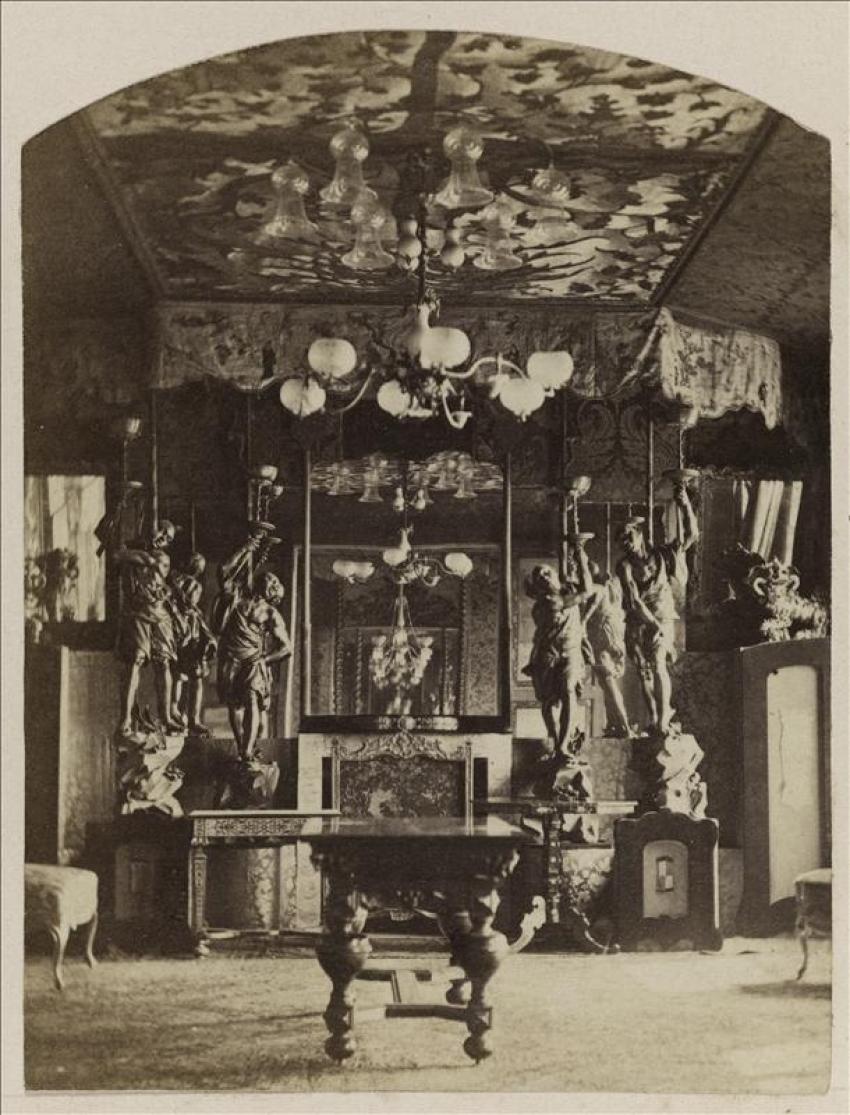
Blue Drawing Room
“The blue drawing room, which follows, is no less sumptuous in another order of decoration; but we only want to bring back the memory of a little performance which was given to us there one evening. A charade was played on a subject proposed by Victor Hugo.”
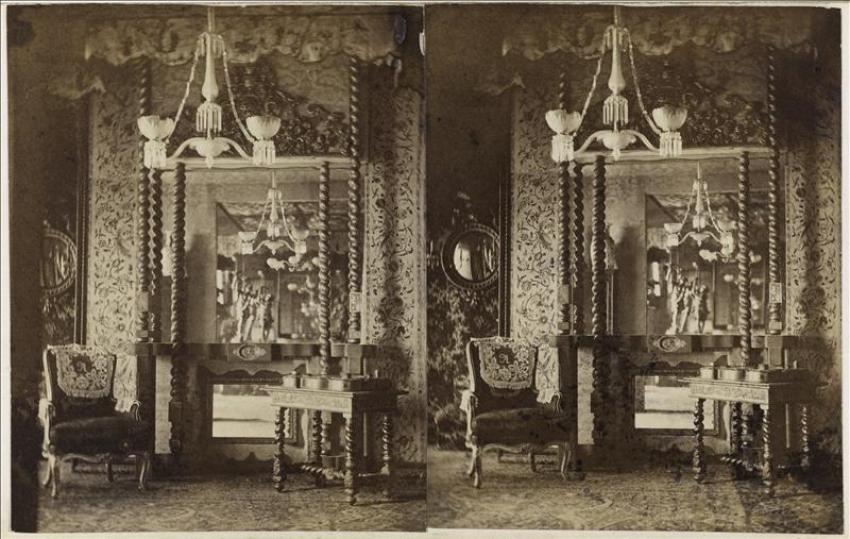
Oak Gallery
“Six windows, overlooking Fort Saint-Georges and the sea, distribute light through a veritable forest of carved oak. Which piece of furniture, which rarity of this museum to stop in front of first? One wonders. You look, you look again, and when you think you have seen everything, you realise that you have left out countless details. The oak gallery, which is twice as deep as the salons on the first floor, is divided in two by a clever arrangement of furniture combined with a beautiful portal with twisted columns in Renaissance style, painted and gilded. In the first part stands the fireplace; in the second, one glimpses the mass of a magnificent bed, so vast that one might think it had been, not made, but erected.”
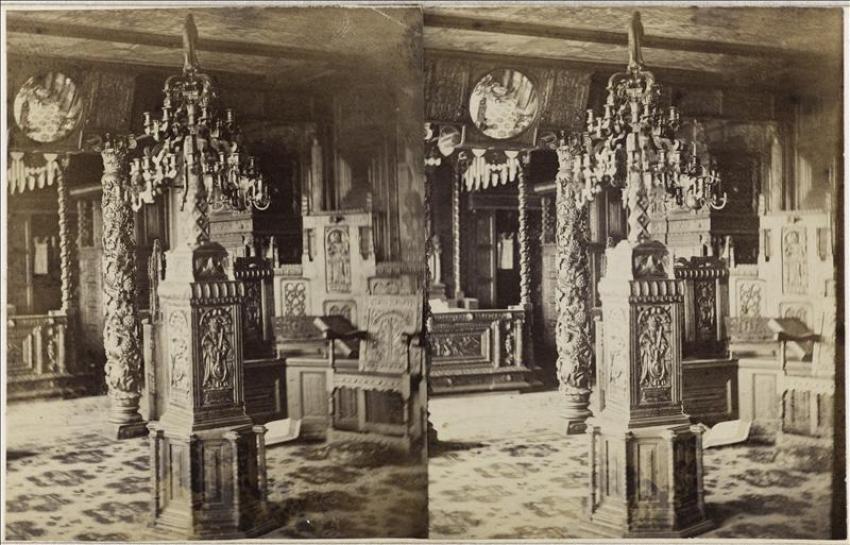
Victor Hugo’s Bedroom (the first Look-out)
“The Hauteville House has its signal mast and also its Look-out. – Victor Hugo chose the Look-out for his bedroom, I was going to say the attic, a small glazed belvedere, open to all horizons, enormous for the soul, narrow for the body, containing, like a captain's cabin, everything in a tiny space: the small table, the paper, the ink, the quill, and an iron bed, as narrow and hard as a soldier's bed.”
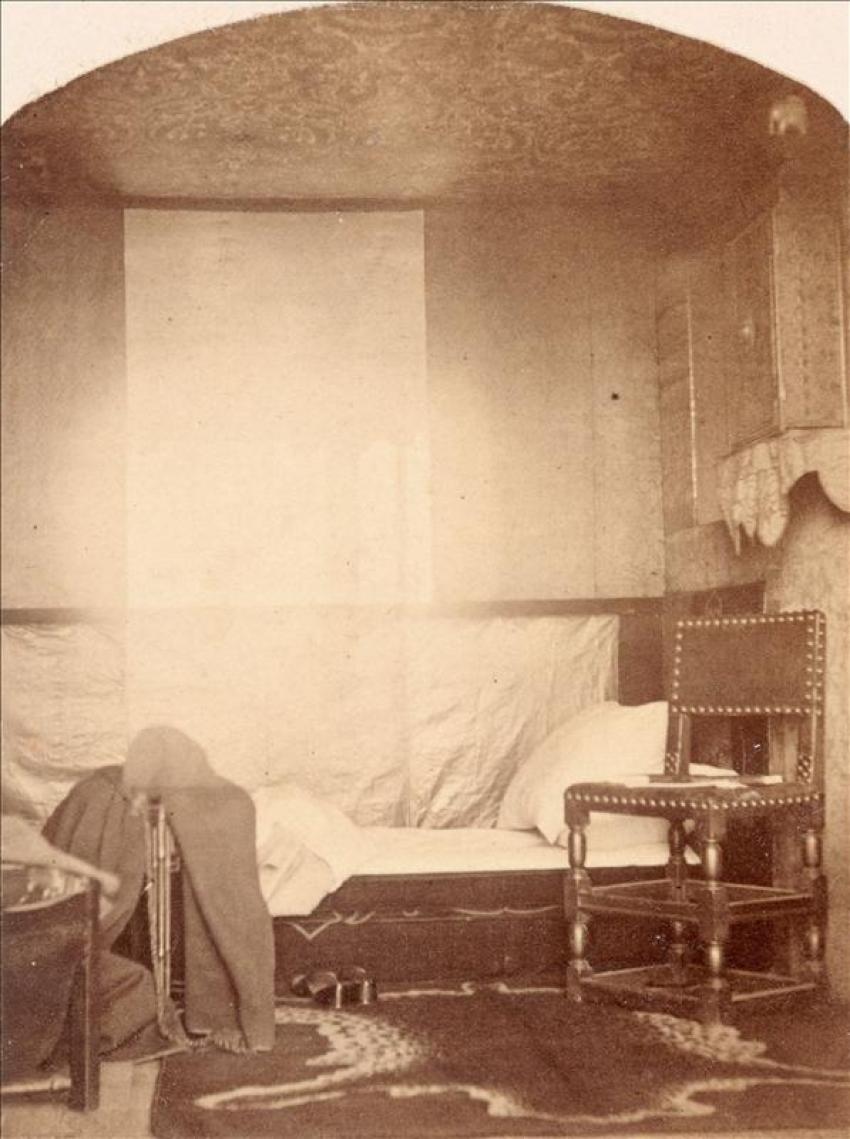
Garden
“Family, study, poetry, fine arts, divine caresses of the soul, aren't you all powerful! – I saw in the garden a stone bench where Victor Hugo comes to sit. – From there, one dominates the city and the sea, and beyond, on the horizon, each beautiful day discovers a barely visible white line, which is France. I saw the poet sitting on that bench, and as he spoke, his eyes remained fixed on that side of the sea, seeking to penetrate the mist...
Your tempting shore,
he said.”
